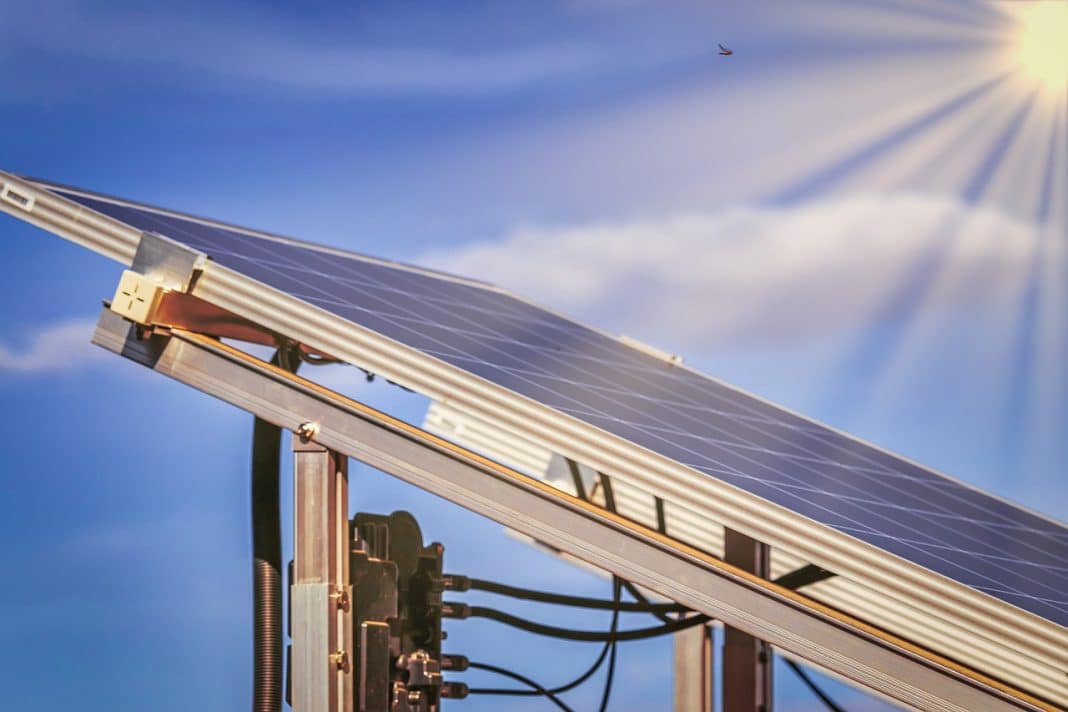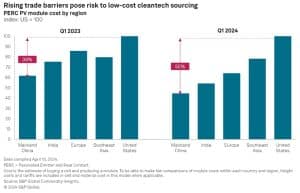As governments across the world push for cleaner energy, the competition between India and China for cleantech dominance intensifies. China’s early investment in clean energy technology and manufacturing has given it a significant lead. However, India is rapidly building its capacity, aiming to grab the spotlight in the global market.
This analysis explores the current landscape, identifying strengths, weaknesses, and what lies ahead for both nations in the cleantech race.
China’s Technological Edge and Cost Advantage
China remains a global leader in clean energy manufacturing. The country’s investments in solar PV, battery technology, and wind energy have solidified its dominance. China’s advantage stems from its ability to manufacture at a lower cost while maintaining high technological sophistication.
For instance, in solar PV manufacturing, China controls key parts of the supply chain, including wafers and polysilicon, both essential for solar panel production.
Credible media sources reveal that countries like India are taking big steps, and China’s manufacturing output and efficiency continue to overshadow most nations. Its cleantech products are not only produced at a lower cost but have also overcome previous concerns about quality. This quality and competitive pricing have allowed Chinese manufacturers to grow their market share, even in sectors like wind energy, where they face strong competition.
According to a Wood Mackenzie report, China now commands the manufacturing landscape across major clean technologies.
- It holds 60% of the wind foundation market and an impressive 97% share of solar PV wafer production.
- China’s dominance extends beyond manufacturing, with booming electric vehicle (EV) sales further highlighting its leadership in the sector.
India’s Growing Investment in Cleantech Market
India is starting to invest more in its global cleantech market. This is getting a push with its low-cost manufacturing base and government support.
For example, the Production-Linked Incentive (PLI) scheme, has helped reduce solar PV manufacturing costs by up to 24%, making India competitive in the global market. This program aims to establish domestic manufacturing for critical clean energy components like solar modules and batteries.
Additionally, India’s energy efficiency program has been in place for years, and the country recently introduced a hydrogen policy focused on producing low-carbon hydrogen through domestic electrolyzer manufacturing.
India’s clean energy sector has seen a massive uptick in investment. In 2023, the country invested $68 billion in clean energy projects, a 40% increase compared to the 2016-2020 average. Almost 50% of this spending was directed toward low-emissions power generation, particularly solar PV.
Conversely, India’s fossil fuel investments also grew by 6% to $33 billion in 2023, as the country continued to grapple with rising fuel demand.
Image: Past and future energy investment in India in the Announced Pledges Scenario and the Net Zero Emissions by 2050 Scenario, 2016-2030

After evaluating the current scenario, we can say that India is on the brink of a clean energy revolution. Prime Minister Narendra Modi’s commitment to add 500 gigawatts (GW) of clean energy by 2030 will certainly help India to be a global leader in renewable energy. But the question remains how is the country planning to meet this ambitious target?
2024 Looks Rosy for India…
After years of slow progress, 2024 has marked a turning point for India’s renewable energy sector. Solar panels and wind turbines are being installed at a commendable pace. Media reports reveal that 18.8 GW of new renewable energy capacity was added till August this year. This way more than the total capacity of last year.
According to the International Energy Agency (IEA), India is on track to add 34 GW by the end of the year, with projections showing growth will nearly double to 62 GW annually by 2030.
On October 14, India’s power ministry announced a plan to upgrade its power grid to support renewable energy expansion through 2032. The project involves a $109 billion investment and aims to bolster Prime Minister Narendra Modi’s vision for a clean India.
India is also benefiting from Western countries’ efforts to diversify supply chains and reduce reliance on China. The US and the EU have enacted tariffs and trade restrictions on Chinese products, giving Indian manufacturers an opening to supply premium-priced markets, particularly in solar PV. However, market analysts also predict that India could become the second-largest solar PV manufacturing region after China in 3-5 years down the line.
Industry experts predict that this rapid expansion might outpace China’s growth rate in the second half of the decade, positioning India as the world’s fastest-growing clean energy market.
But is it as rosy as it seems to be? The answer is probably no. We unlock the challenges below.
- READ MORE: Tata’s $11 Billion Leap: India’s First Semiconductor Fab in Partnership with Taiwan’s PSMC
A Lingering Challenge for India’s Clean Tech Future
However, India still faces several challenges. Despite the progress and one of the fastest-growing economies, Indian manufacturers remain dependent on China for inputs like wafers and polysilicon. Thus, India is not yet 100% self-sufficient in these areas.
Furthermore, as the country is growing, so is its energy demand. By 2050, energy demand in India is expected to outpace every other region in the world. This growing demand could put enormous pressure on its energy system, which still heavily relies on imported fossil fuels like crude oil and natural gas.
And with this rising demand comes the risk of increased carbon emissions, particularly if fossil fuel consumption continues to grow for transportation, power generation, and industrial use.
S&P Global’s research shows that India is also moving more slowly than China in wind energy and battery manufacturing. While the country is scaling up battery production, it’s unclear whether it can meet its goal of self-sufficiency by 2030. In wind energy, India’s infrastructure is better suited for onshore projects, and it may struggle to compete with China in the growing offshore wind market.
Risks of Trade Barriers and Global Oversupply
One of the major risks facing India’s cleantech expansion is potential trade barriers. As the US and EU focus on domestic reindustrialization, Indian cleantech exports could become targets for new tariffs, especially in sectors like solar PV and batteries. There’s a delicate balance between encouraging global supply chain diversification and protecting domestic industries.
Additionally, in some cleantech sectors like electrolyzers, global oversupply could make it difficult for Indian manufacturers to remain competitive. Although India is expected to produce more electrolyzers than it needs by 2030, stiff competition from established players could drive prices down, potentially limiting India’s growth in this space.
Can India Compete Without China?
China dominates global supply chains, making it unrealistic for India to fully take over its manufacturing space, according to the Economic Survey 2023-24. The survey, presented by Finance Minister Nirmala Sitharaman, emphasized that India may need Chinese investment and technology to boost its manufacturing sector. Instead of distancing from China, partnering with its expertise could be key to driving India’s cleantech growth.
The Survey pointed out that,
“It may not be the most prudent approach to think that India can take up the slack from China vacating certain spaces in manufacturing. Indeed, recent data cast doubt on whether China is even vacating light manufacturing.”
This is self-explanatory.
China’s dominance in the cleantech sector is undeniable, but India is making strides to close the gap. With strategic government support and lower production costs, India has the potential to become a key supplier of cleantech products to the US and Europe.

Source: Climate Energy Finance
This shows that China’s lead in technology and cost efficiency will secure its position as a global leader for the foreseeable future. On the contrary, India’s future success will depend on overcoming its reliance on Chinese inputs. Some viable options are accelerating technological advancements and avoiding trade barriers that could hinder its growth.
From reliable economic surveys and reports, we can conclude that while India may not surpass China anytime soon, its role in the global cleantech supply chain is expanding, and the competition has just begun…




